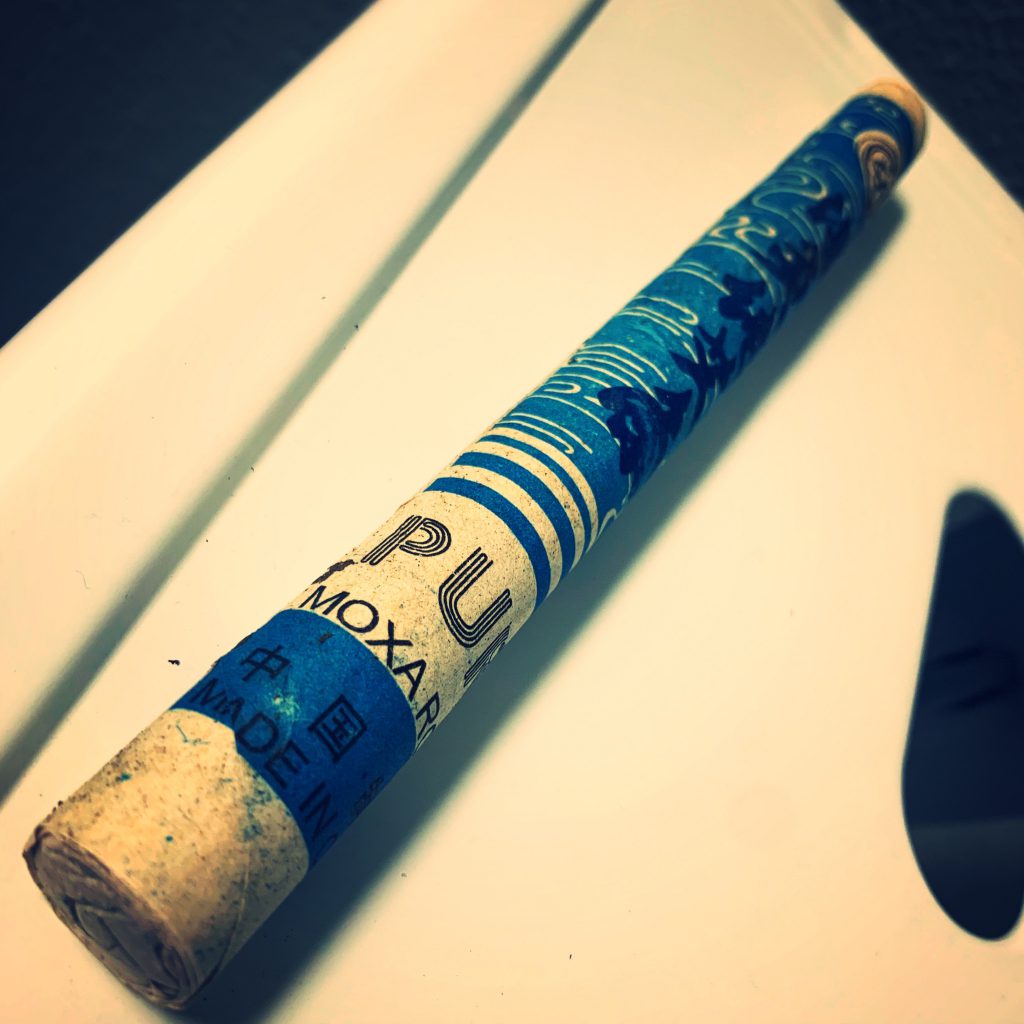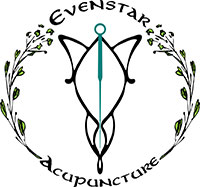Lately I have had a lot of questions about moxibustion so I figured I would provide some helpful information that I have found in my research about how moxibustion works and affects the body.
Moxibustion, also known as jiu fa in Chinese. The narrow definition of moxibustion is “the medical application of burning mugwort floss on or over acu-moxa point of an affected site”. The broader definition encompasses applying external heat on or over acu-moxa points of an affected area and the heat source does not necessarily have to be mugwort.
About the Mugwort Plant
Mugwort (folium artemisiae argyi) is a common, leafy plant that is used for making herbal medicines both in the household and in professional apothecaries. The mugwort plant is known as ai ye in Chinese and mogusa in Japanese. Mugwort floss is the soft, fluffy fibers left after mugwort has been repeatedly sifted and ground. High quality mogusa will be light in color, fluffy like cotton candy, and will burn at a higher temperature than lower grade moxa.
Mugwort enters into the Spleen, Lung, and Kidney channels when taken internally and has bitter, acrid, and warm properties. Mugwort by itself has the actions of dispersing cold, eliminating dampness, relieving pain, warming the center, warming the uterus, quieting the fetus, and stopping bleeding.

Research About Moxibustion and How it Works
The effects of moxibustion have been researched for over 100 years but new research is constantly coming out about the potential benefits and it’s effect on specific disorders. In 1912 the first research was done about moxibustion and it’s effects on blood pressure (Shao, 1980) and intestinal paralysis (Zhou, 2008).
Moxibustion has the functions of warming cold, transforming and eliminating dampness, warming and opening the channels, moving qi, invigorating blood, relieving pain, dispersing stasis, resolving stagnation, aiding central qi, tonifying qi and blood, warms yang and tonifies qi and yang, lifts yang qi, prevents disease and stimulates immune system, expels evils from the body, clears heat and resolves toxins. It burns at 548-890 degrees without producing a flame and has a thermal reaction on the skin to create a warming effect (Zhang, 1988).
The patient’s skin will heat up at the site where the moxibustion is administered, not just in the superficial layer but also in the subcutaneous layer. There is a four-stage temperature time curve of the thermal effects of moxibustion which are slow rising, rapid rising, rapid decline, and slow decline (Du & Wang et al, 2010).
Vasoconstriction occurs at the site where the moxa is burning and vasodilation occurs in the skin around the burn site (Okazaki et al, 1990). Moxibustion may also produce Heat Shock Proteins (HSP’s) at the site of the burn and may have an important role in a mechanism of action (Kobiashi, 1995).
What to Expect in the Clinic
Typically in my office I use moxa sticks that look like long cigars that contain dried mugwort. Moxa sticks never touch the skin but provide a strong warming sensation when placed closed to the skin. I primarily use moxibustion for patients who have pain or digestive issues to help regulate the body and bring it back to homeostasis.

If you are interested in experiencing how moxibustion works, contact us today to schedule an appointment!
References
Du G, Bu Y, Wang S, et al. Temperature time curve of the single zhuang moxa cone moxibustion. Shaanxi Journal of Traditional Chinese Medicine. 2010;31(5):619–621.
Fratkin, J.P. (1999). The Emergence of Japanese Style Acupuncture, California Journal of Oriental Medicine, 10(1).
Iuliano, D., & Kuwahara, K. (n.d.) Japanese Moxibustion Techniques – Okyu “Thread
Moxa”. Retrieved from https://theory.yinyanghouse.com/theory/japanese/okyu_thread_moxibustion_technique
Kobayashi K. Induction of heat-shock protein (hsp) by moxibustion. The American Journal of Chinese Medicine. 1995;23(3-4):327–330.
Okazaki M, Aizawa S, Yamauchi M, Oguchi K. Effects of single moxibustion on cutaneous blood vessel and microvascular permeability in mice. American Journal of Chinese Medicine. 1990;18(3-4):121–130.
Shao H. Clinical application and mechanism research of moxibustion. Shanghai Journal of Traditional Chinese Medicine. 1980;(3):41–43.
Wilcox, L. (2009). Moxibustion: A Modern Clinical Handbook. Boulder, CO: Blue Poppy Press.
Zhang T. Some heat issues of the moxibustion therapy. Henan Traditional Chinese Medicine. 1988;(6, article 28)
Zhou Z-H, Yuan Y-Q. Survey of Japan moxibustion methods. Chinese Acupuncture & Moxibustion. 2008;28(1):65–67.




How do acupuncture points work? How does it reduce pain? What if you want to increase pain using acupuncture?
Acupuncture works by balancing the channel system (meridian system) in the body. Depending on what symptoms we are trying to correct, certain points are chosen along a channel based on the functions of the points. An acupuncturist will choose acupuncture points that fit the symptom pattern given by the patient.
Acupuncture reduces pain by causing a micro-trauma that the body reacts to by sending fresh blood and lymphoctyes to the area. Fresh blood carries oxygen and nutrients needed to expedite the healing process and relieve pain.
Acupuncture does not usually increase pain but I would be interested to find out the reason behind wanting to increase pain using acupuncture.
Thank you for your comment!
Awesome site, how do you get all this information?I’ve read through a few posts on your site and I like your writing style. Thanks a million, keep up the good work.
Do my essays online
Thank you! A lot of this information I learned while in school and working under experienced acupuncture physicians. I also do research in books and professional articles to provide the most accurate and up to date information. I appreciate you as a reader and thank you for the positive feedback!